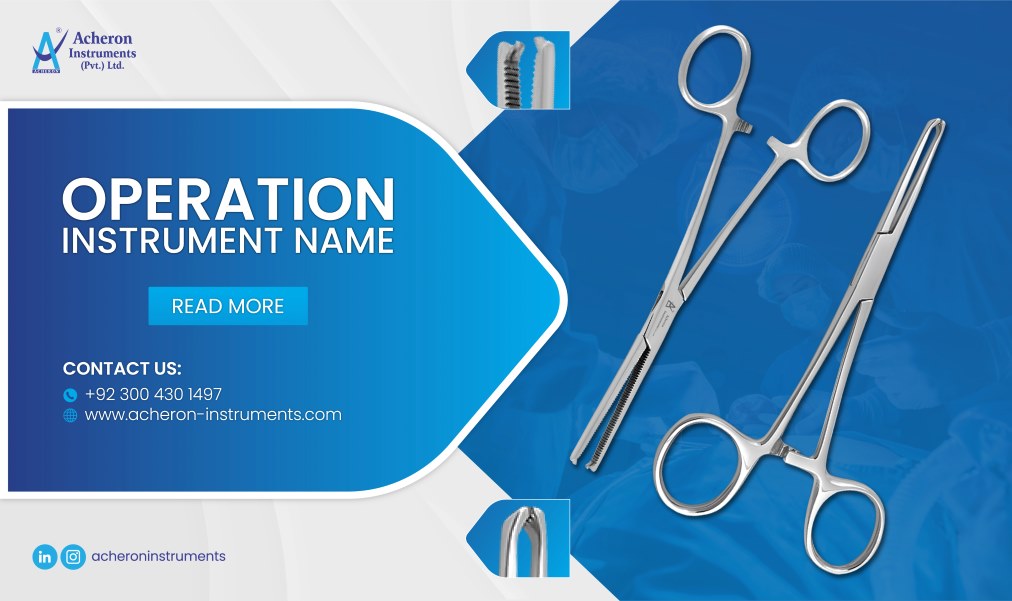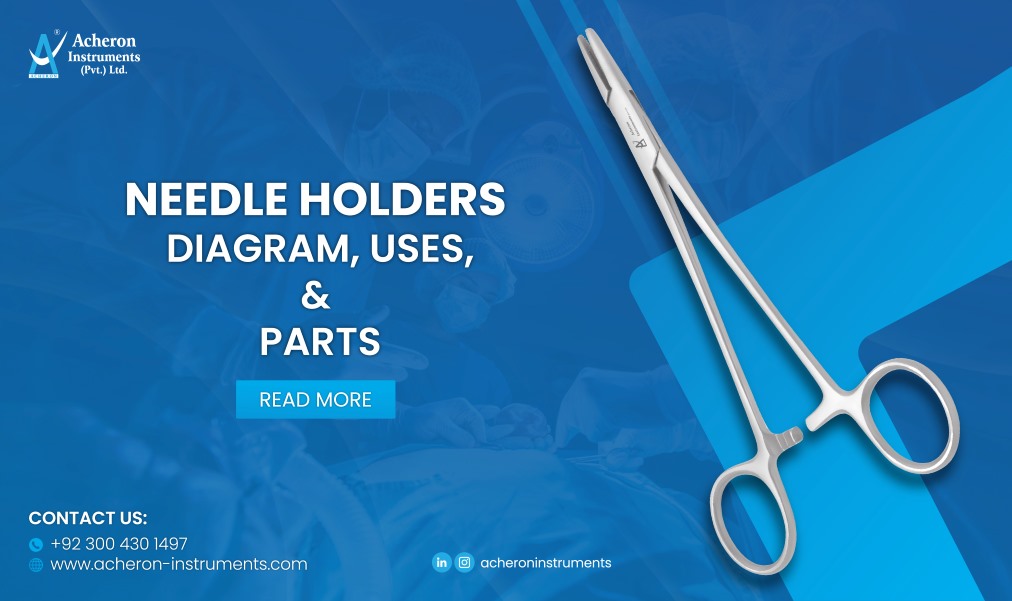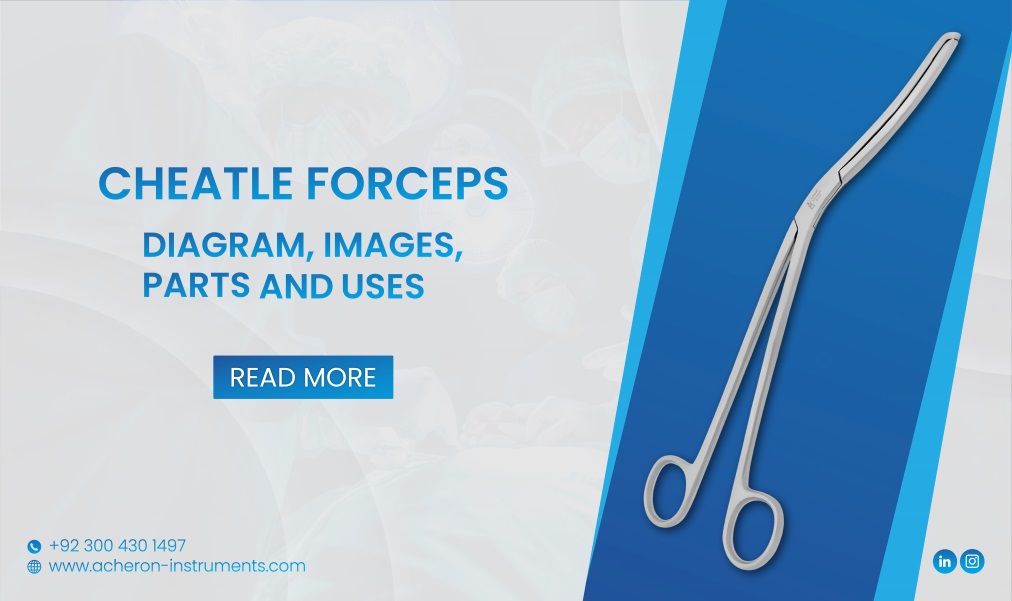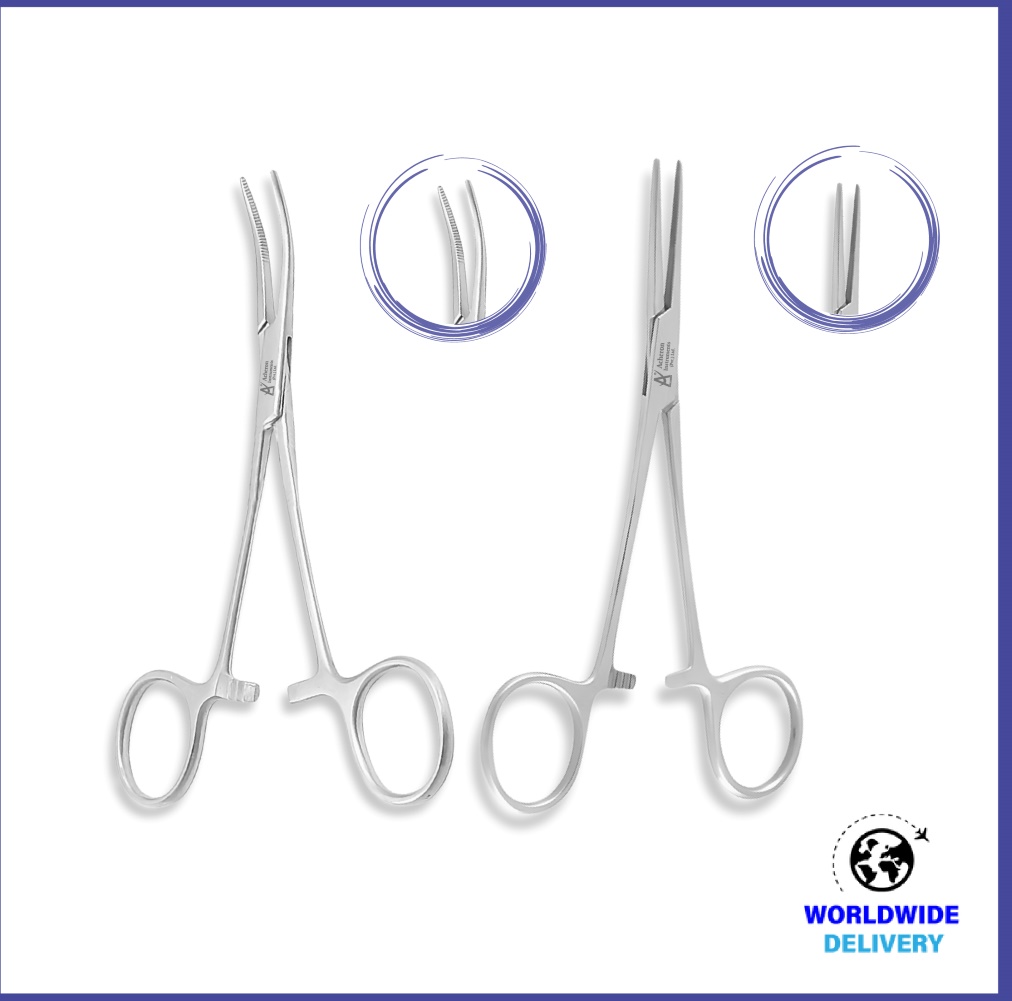.png)
Are you a medical professional looking for the perfect surgical tool to ensure precision and efficiency? Look no further, as we delve into the world of surgical instruments and compare two popular contenders: Kelly clamps vs hemostats. In this article, we aim to determine which tool reigns supreme in the operating room.
Kelly clamps, with their unique design and versatility, have been a staple in surgical settings for decades. These clamps have curved serrated jaws that firmly grasp tissue, making them ideal for controlling bleeding or securing sutures. On the other hand, hemostats, with their straight jaws and locking mechanism, are renowned for their ability to clamp blood vessels, ligate bleeding vessels, and provide temporary hemostasis.
By examining their features, applications, and limitations, we will outline the strengths and weaknesses of both instruments. Whether you are a surgeon, nurse, or aspiring medical professional, understanding the nuances of these tools can enhance your surgical skills and improve patient outcomes.
Join us as we explore the world of surgical instruments and unravel the enigma of Kelly clamps and hemostats.
What are Kelly clamps?
Kelly clamps, with their unique design and versatility, have been a staple in surgical settings for decades. These clamps have curved serrated jaws that firmly grasp tissue, making them ideal for controlling bleeding or securing sutures. One of the key advantages of Kelly clamps is their ability to apply steady and even pressure to the tissue, minimizing the risk of tissue damage. Additionally, the curved design allows for maneuverability in hard-to-reach areas, ensuring optimal control during surgical procedures.
Another notable feature of Kelly clamps is their locking mechanism. Once the jaws are clamped onto the tissue, a simple lock secures them in place. This feature provides stability and allows surgeons to focus on other aspects of the surgery without worrying about the clamp slipping or releasing its grip. Kelly clamps are available in various sizes, allowing healthcare professionals to choose the most suitable option for their specific needs.
Despite their advantages, Kelly clamps do have some limitations. The curved jaws, while advantageous in many cases, may not be suitable for all surgical procedures. Additionally, their size and shape may limit their effectiveness in certain anatomical regions. It is important for medical professionals to consider these factors when deciding whether to use Kelly clamps in a particular surgery.
Did you you? both Kelly clamps and hemostats come in a variety of materials like stainless steel and titanium. But did you know some specialized versions can be coated with tantalum? This rare metal, prized for its biocompatibility and resistance to tissue sticking, makes these clamps particularly useful for delicate procedures like nerve repair.
What are hemostats?
Hemostats, on the other hand, are renowned for their ability to clamp blood vessels, ligate bleeding vessels, and provide temporary hemostasis. These surgical tools have straight jaws that can be locked in place, ensuring a secure grip on the tissue. Hemostats are commonly used in various surgical procedures, including general surgery, orthopedics, and gynecology.
One of the key advantages of hemostats is their versatility. The straight jaws allow for precise control and manipulation of tissue, making them suitable for a wide range of procedures. Additionally, the locking mechanism ensures that once the hemostat is clamped, it remains in place, providing stability during surgery.
Similar to Kelly clamps, hemostats are available in various sizes and designs to accommodate different surgical needs. Some hemostats have delicate tips for more precise procedures, while others have broader jaws for securing larger vessels. This variety allows medical professionals to select the most appropriate hemostat for each surgical scenario.
While hemostats offer many benefits, they also have a few limitations. The straight jaws may make it challenging to access certain areas or maneuver around delicate structures. Furthermore, the locking mechanism may require additional time and effort to secure properly. Despite these limitations, hemostats remain a valuable tool in the surgical toolkit.
Similarities between Kelly clamps and hemostats
Although Kelly clamps and hemostats have distinct designs and applications, they share some similarities. Both instruments are used to control bleeding and provide hemostasis during surgery. Whether it's securing blood vessels or managing tissue, both Kelly clamps and hemostats play a crucial role in maintaining a clear surgical field.
Furthermore, both tools are made of high-quality surgical-grade stainless steel, ensuring durability and resistance to corrosion. This makes them suitable for repeated use and sterilization, adhering to strict infection control protocols.
Differences between Kelly clamps vs hemostats
While Kelly clamps vs hemostats have similarities, they also have notable differences that can impact their effectiveness in specific surgical scenarios. The most apparent difference lies in their jaw design. Kelly clamps have curved, serrated jaws, while hemostats have straight jaws. This distinction affects their ability to grasp tissue and access different anatomical areas.
The locking mechanism is another differentiating factor between the two instruments. Kelly clamps use a simple lock that secures the jaws in place, while hemostats employ a ratchet or box lock mechanism, allowing for multiple locking positions. This feature provides surgeons with more control over the pressure applied to the tissue.
Additionally, the size range of Kelly clamps vs hemostats may differ, with each tool offering various options to accommodate different surgical needs. It is crucial for medical professionals to consider the size and design of the instrument when selecting the appropriate tool for a particular surgery.
Advantages of using Kelly clamps in surgery
Kelly clamps offer several advantages in surgical procedures. The curved jaws allow for better access and manipulation of tissue in hard-to-reach areas. The serrated surface provides a secure grip, minimizing the risk of slippage and ensuring precise control over bleeding vessels. The locking mechanism keeps the clamp in place, freeing up the surgeon's hands for other tasks. These features make Kelly clamps highly effective in a wide range of surgical procedures.
Additionally, Kelly clamps are versatile instruments that can be used for multiple purposes, including clamping blood vessels, securing sutures, and controlling bleeding. Their curved design and variety of sizes make them suitable for various anatomical regions and surgical scenarios.
Advantages of using hemostats in surgery
Hemostats offer their own set of advantages in the operating room. The straight jaws provide excellent visibility and allow for precise control over tissue. The locking mechanism ensures that the hemostat remains in place, even during complex surgical procedures. This stability is crucial in achieving hemostasis and preventing unwanted bleeding.
Furthermore, hemostats are available in different sizes and designs, making them suitable for a wide range of surgical applications. From delicate procedures to larger vessel clamping, medical professionals can choose the most appropriate hemostat for their specific needs.
Case studies and testimonials on the effectiveness of Kelly clamps
To further illustrate the effectiveness of Kelly clamps, let's delve into some case studies and testimonials from healthcare professionals who have utilized these instruments in their surgical practice.
Case Study 1: Dr. Smith, a cardiovascular surgeon, recounts a complex cardiac procedure where Kelly clamps played a vital role in achieving hemostasis. The curved jaws allowed for precise control over the bleeding vessels, ensuring a successful outcome for the patient.
Testimonial 1: Nurse Jennifer shares her experience with Kelly clamps in the operating room. She highlights their versatility and ease of use, stating that they are her go-to tool for securing sutures and controlling bleeding.
Case studies and testimonials on the effectiveness of hemostats
Now, let's explore some case studies and testimonials related to the effectiveness of hemostats in surgical procedures.
Case Study 2: Orthopedic surgeon Dr. Thompson discusses a complex joint replacement surgery where hemostats were instrumental in achieving temporary hemostasis during the procedure. The straight jaws and locking mechanism provided stability and control over bleeding vessels, ensuring a successful outcome for the patient.
Testimonial 2: Surgeon Dr. Rodriguez shares his positive experience with hemostats in gynecological procedures. He praises their versatility and precise control over tissue, emphasizing that they are an indispensable tool in his practice.
Conclusion
In conclusion, both Kelly clamps and hemostats, expertly crafted by Acheron Instruments, stand as indispensable surgical tools. Kelly clamps, with their versatile curved design, excel in providing secure grip and control over tissues. Meanwhile, Acheron's hemostats, featuring straight jaws and a robust locking mechanism, offer precise control and stability in diverse surgical scenarios.
As a medical professional, harnessing the strengths of these Acheron-crafted instruments enhances surgical skills and improves patient outcomes. Explore the unique features of Kelly clamps and hemostats, and confidently select the most suitable tool for each procedure. Elevate your practice with Acheron Instruments—precision, efficiency, and optimal patient care at your fingertips.
Ready to equip your surgical toolkit? Discover the Acheron Advantage today: Explore Kelly Clamps and Hemostats









